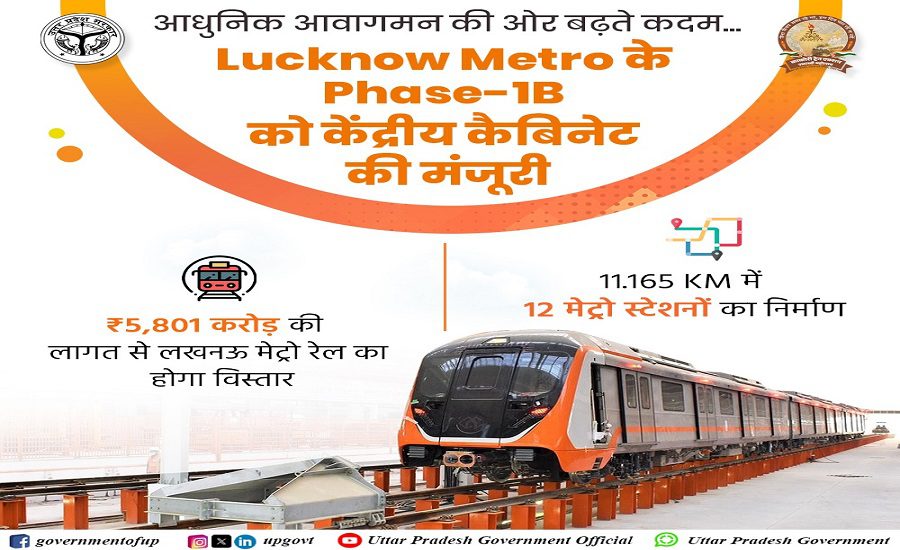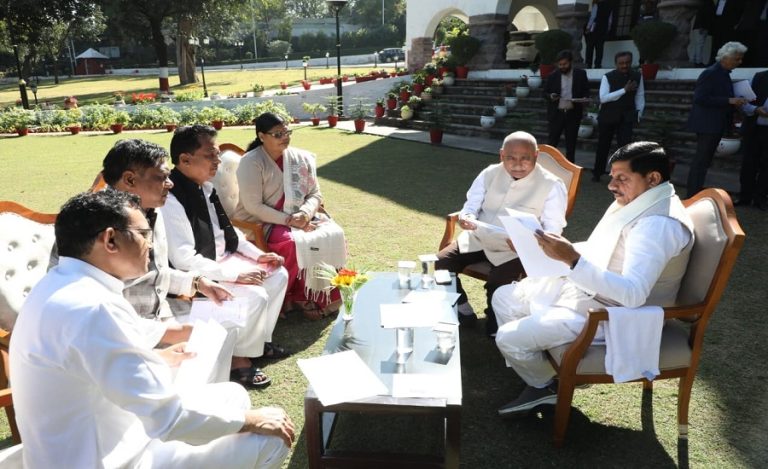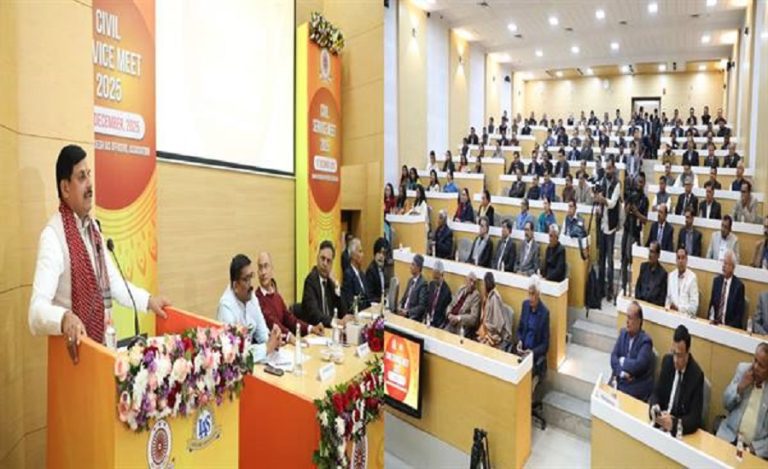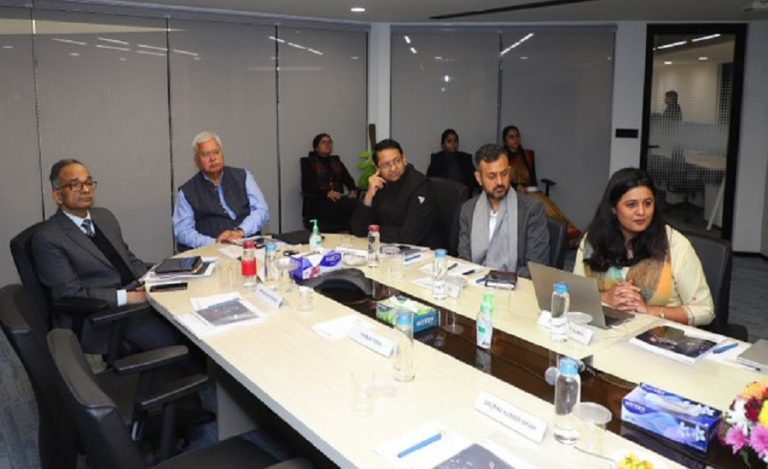Lucknow: In a significant boost to public transport and urban infrastructure, the Union Cabinet, under the leadership of Prime Minister Narendra Modi, has given its green signal to Phase-1B of the Lucknow Metro Rail Project. The newly approved section will span 11.165 kilometers, comprising 12 stations—7 underground and 5 elevated—with a sanctioned budget of ₹5,801 crore.
This expansion is poised to redefine the way Lucknow moves, particularly benefiting the city’s congested old quarters and key cultural, medical, and commercial hubs.
CM Yogi Applauds Central Government’s Decision
Chief Minister Yogi Adityanath expressed his gratitude for the approval, calling it a forward-looking decision that aligns with the state’s rapid development goals.
“The Cabinet’s approval of Lucknow Metro Phase-1B is not just about transportation—it’s about enhancing quality of life, creating jobs, and connecting the city’s historic roots with its modern aspirations,” CM Yogi stated in a social media post.
He also thanked Defence Minister and Lucknow MP Rajnath Singh, crediting the collaborative efforts at the state and national level for this progress.
read also: UP’s ‘Village Mall’ Model Reshaping Rural Economy Under CM Yogi’s Vision
What’s in Phase-1B?
This newly approved corridor will connect several high-density and historically rich areas of Lucknow that currently lack efficient mass transit. The route will serve:
- Aminabad, Yahiyaganj, Pandeyganj, and Chowk – major commercial zones of Old Lucknow
- King George’s Medical University (KGMU) – one of the city’s most critical healthcare institutions
- Landmarks & tourism hotspots – Bara Imambara, Chota Imambara, Bhool Bhulaiya, Ghanta Ghar, and Rumi Darwaza
With this extension, Lucknow Metro’s total network will expand to 34 kilometers, creating a more cohesive and accessible transport system for the city’s 3+ million residents.
Why This Matters: More Than Just a Metro
The Phase-1B extension is being described as a game-changer for Old Lucknow, which has long struggled with traffic congestion, narrow lanes, and overburdened roads. But beyond the mobility benefits, this project has far-reaching implications:
Reduced Traffic and Travel Time
Expect a significant decline in vehicular load on congested routes, saving commuters both time and stress.
Cleaner Environment
Less reliance on fuel-powered transport means fewer emissions and a healthier atmosphere—especially vital for a city known for its dense urban pockets.
Tourism and Business Growth
With improved access to historical sites and markets, tourism is set to receive a boost. Local businesses, especially in the hospitality and retail sectors, could see increased footfall and revenue.
New Employment Opportunities
From construction to operations, the metro’s expansion will create jobs and support micro and small businesses around new stations.
A Vision for a Modern, Connected Lucknow
Government officials describe Phase-1B as a strategic infrastructure investment, aimed at not just meeting current urban demands but shaping the city’s future.
The statement from the Union Cabinet emphasized that this corridor would offer long-term benefits, addressing current urban mobility gaps while laying the foundation for future growth and sustainability.
By connecting essential institutions, tourist destinations, and markets, the new line will enhance economic activity, improve accessibility, and increase ease of living for the general public.
The Road Ahead
Construction on Phase-1B is expected to begin soon, with a tentative project duration of five years. Once completed, Lucknow will not only have a longer metro network but also one that better reflects the city’s socio-economic fabric.
The move is seen as a milestone in Uttar Pradesh’s infrastructure push, with Lucknow continuing to emerge as a model for balanced development—where heritage meets modern urban planning.



























